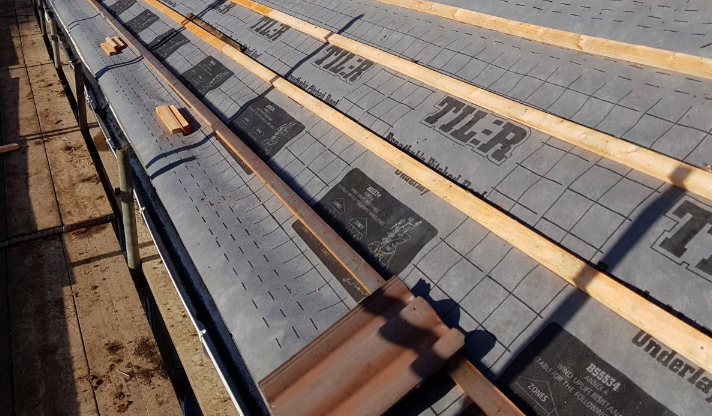Top Cover Chronicles: Exploring the World of Roofing
As a homeowner, one of the most crucial components of your house is the roof. It’s not just an aesthetic feature; it plays a vital role in protecting your home from the elements, maintaining structural integrity, and ensuring energy efficiency. This blog post delves into the world of roofing, offering valuable insights and practical tips to help you make informed decisions about your roof.
Understanding the Basics of Roofing
Different Types of Roofing Materials and Their Pros and Cons
Selecting the right roofing material is essential for durability, maintenance, and overall home aesthetics. Here are some popular options:
- Asphalt Shingles: Affordable, easy to install, and available in various colors. However, they have a shorter lifespan than other materials and can be susceptible to wind damage.
- Metal Roofing: Known for its longevity, durability, and energy efficiency, metal roofing panels like those in Michigan can be expensive upfront but offer an excellent return on investment due to their long lifespan.
- Clay and Concrete Tiles: Highly durable and energy-efficient, these tiles offer a distinctive look. They are heavier and may require additional structural support, making installation more complex and expensive.
- Wood Shingles and Shakes: Provide a natural and rustic appearance. While beautiful, they require regular maintenance and are prone to fire hazards unless properly treated.
- Slate: Offers unmatched durability and a high-end appearance. Slate is one of the most expensive roofing materials and requires specialized installation techniques.
The Impact of Climate on Roofing Choices
Climate plays a significant role in determining the best roofing material for your home. For example:
- Hot Climates: Opt for materials with high reflectivity, such as metal or clay tiles, to reduce heat absorption.
- Cold Climates: Choose materials that can withstand freeze-thaw cycles, like asphalt shingles or metal roofing.
- Windy Areas: Select wind-resistant materials, such as metal roofing or architectural asphalt shingles, for better durability.
Signs Your Roof Needs Attention
Regular roof inspections can help you identify issues before they escalate into costly repairs. Look out for these common signs:
- Missing or Damaged Shingles: Gaps in your shingles can expose your home to water damage.
- Sagging Roof: This could indicate structural issues that need immediate attention.
- Water Stains on Ceilings or Walls: A clear sign of a leak that needs to be addressed.
- Granules in Gutters: Excessive granules from asphalt shingles in your gutters indicate wear and tear.
The Top Cover Chronicles
Advancements in roofing technology are continuously evolving. Here are some innovative trends:
- Cool Roofing: Designed to reflect more sunlight and absorb less heat, cool roofs help reduce energy costs.
- Green Roofs: Covered with vegetation, green roofs improve insulation, reduce the urban heat island effect, and manage stormwater.
- Solar Shingles: Combining solar panel technology with traditional roofing materials, solar shingles generate electricity while protecting your home.
- Synthetic Roofing Materials: Made from recycled materials, synthetic options offer durability and eco-friendliness.
DIY vs. Professional Roofing Services
While some roofing tasks can be handled by DIY enthusiasts, others require professional expertise. Here’s a quick guide:
When to DIY:
- Minor Repairs: Replacing a few shingles or patching small leaks.
- Cleaning Gutters: Regular maintenance to prevent water damage.
When to Hire a Professional:
- Major Repairs or Replacements: Involves extensive work and safety risks.
- Complex Installations: Such as metal or slate roofing, require specialized skills.
The Cost of Quality Roofing
Several factors influence the cost of a new roof or repairs, including:
- Material: Different materials come with varying price tags.
- Labor: Costs can vary based on the complexity of the job and regional labor rates.
- Roof Size and Slope: Larger, steeper roofs require more materials and labor.
- Removal of Old Roof: Removing and disposing of old roofing can add to the cost.
Investing in quality roofing upfront can save you money in the long run by reducing the need for frequent repairs and enhancing energy efficiency.
Tips for Choosing the Right Roofing Contractor
Selecting the right contractor is crucial for a successful roofing project. Consider these tips:
- Check Credentials: Ensure the contractor is licensed, insured, and certified by relevant roofing associations.
- Get Multiple Quotes: Compare estimates from several contractors to ensure fair pricing.
- Read Reviews: Look for testimonials and reviews from previous clients.
- Ask for References: A reputable contractor should provide references you can contact.
- Understand the Warranty: Make sure you’re clear about the warranty terms for both materials and labor.
Conclusion
Your roof is an integral part of your home’s structure and aesthetics. By understanding the basics of roofing materials, recognizing signs of damage, and staying informed about the latest roofing technologies, you can make well-informed decisions to protect your home. Remember, investing in quality roofing and choosing the right contractor can save you time, money, and stress in the long run.

